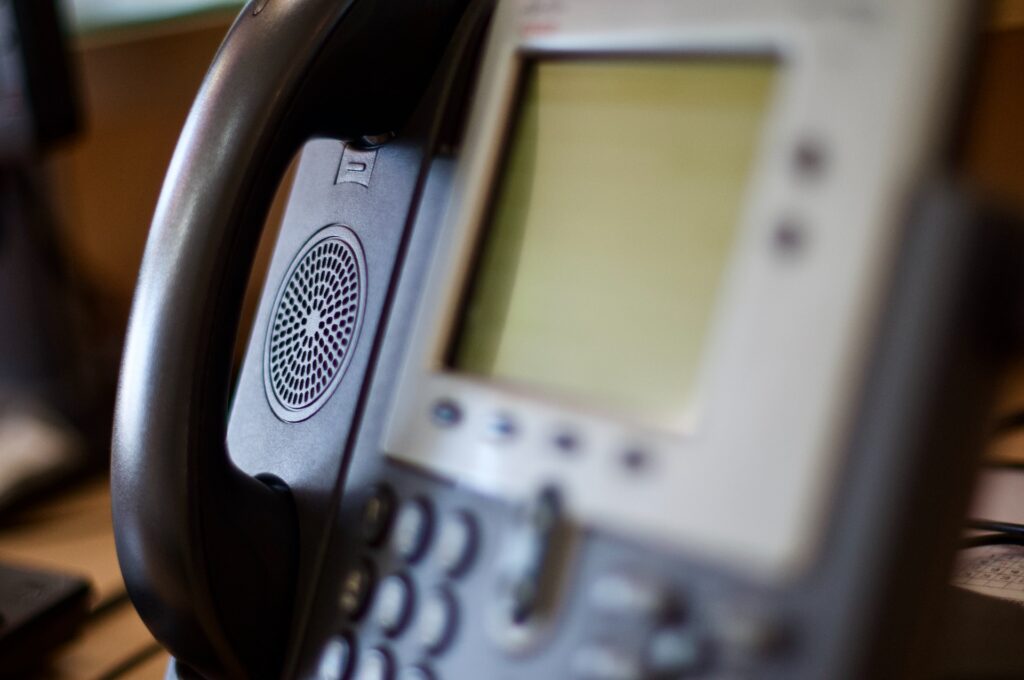Assistive technology for people with hearing loss
There is lots of technology available that can support you to hear more clearly, whether you’re out and about or at home.

In this section, find out more about hearing aids and hearing implants, and other ways to support your hearing, including hearing loops and FM systems.
You can also find out more about assistive listening devices and other kinds of assistive technology, like amplified telephones, which you can use whether or not you have a hearing aid.
On this page:
- Hearing aids and implants
- What are assistive listening devices?
- Hearing loops
- FM systems
- Phones
- Alerting devices
- More assistive listening devices
- Connecting your hearing device with Bluetooth
- Useful resources and suppliers
Hearing aids and implants
Some people with hearing loss choose to wear hearing aids or hearing implants.
Hearing aids are devices that you can wear in your ears to amplify sound. Hearing implants help sound travel directly to your brain, and are implanted by a surgeon.
What are assistive listening devices?
Assistive listening devices are any kind of device that isn’t a hearing aid or hearing implant, but can support people with hearing loss to communicate and access the world.
They might work by amplifying sound that is difficult to hear otherwise, like an amplified telephone. Or they might use visual or tactile alerts to communicate important information, like a vibrating smoke alarm.
On this page, find out more about the different types of assisted listening device available, from hearing loops to flashing alarm clocks.
Hearing loops
What are hearing loops?
A hearing loop (sometimes called an audio induction loop) gives you a direct link to a sound source such as a microphone, sound system or television. It cuts out background noise so that you can hear clearly what you are trying to listen to.
How do hearing loops work?
The loop allows your hearing device to pick up sound from the loop system microphone, rather than all noise in the area.
It does this by sending sound signals directly to the Telecoil (a small coiled wire) in your hearing aid.
How to use hearing loops
To connect to a hearing loop, switch your hearing device to the Telecoil setting (the ‘T’ position). Check with your audiologist that this has been activated.
Hearing loops are available:
- In various public places, such as banks and theatres. Look for the ‘T’ sign. Check with staff that it’s switched on.
- With landlines and smartphones.
- For other devices around the home, such as your TV.
You may need additional equipment to use hearing loops with your phone or in your home. You can find out what products are available from suppliers such as Connevans, Gordon Morris or iHear.
Most theatres, cinemas and conference venues have loop systems available. Sometimes you may need to request a special headset from the venue to use the loop when you are there.
FM systems
An FM system uses radio waves to send sounds from a transmitter to several people at the same time.
These are normally used in schools or offices. You may also find them available for group tours, and at conferences and lectures.
Several FM systems are available and can be used with any hearing aid. You’ll need a compatible receiver, which is usually attached to the bottom of your hearing aids.
Your audiologist may need to link your hearing aids to the FM system and tell you which receiver you need.
Phones
There are a few things you can do to make using the phone easier if you have some kind of hearing loss.
Using the phone with hearing aids
Most phones can be connected to the Telecoil in your hearing aids.
The Telecoil picks up sound signals directly from the phone, making callers easier to hear.
Most landline phones and smartphones are hearing aid compatible. You can hear the call more clearly through your hearing aid on the hearing loop setting:
- Activate the ‘T’ setting on your hearing aid or get your audiologist to do this.
- To hear callers more clearly, place the phone close to your hearing aid.
Find out more about hearing aids.
Amplified telephones
Amplified telephones are designed specifically for people with hearing loss. Just as the name implies, they have a louder volume than a regular phone.
They both ring more loudly, and amplify the speaker’s voice more loudly than a typical telephone.
You can get both amplified landline phones and amplified mobile phones.
Some other common features of amplified phones include:
- A separate control to boost the volume through the handset.
- A handset tone control, which allows you to make people’s voices clearer.
- Large dial buttons and backlit keypads.
- Voicemail that can be played back in “slow mode”.
- The ability to connect the phone to a separate headset or headphones.
Assistive devices for landline phones
You can use various devices to help you hear your landline phone more clearly:
- Extension bells or ringer – to make your landline louder. These usually include volume control and different ringtones, among other features.
- Visual call indicator – which flashes when your phone rings to alert you. Most also have a loud ringer.
- Telephone amplifier – connects to your phone to make the caller’s voice louder.
You should also try adjusting the settings of your phone, to see if you can increase the volume, or change the ringtone to one that’s easier for you to hear.
Choosing a smartphone that works well with hearing aids
Some smartphones work better with hearing aids than others.
You may get radio interference (buzzing) when you hold your smartphone close to your hearing aid, caused by the phone’s electronics and display.
Smartphones can be ranked from 1 (poor) to 4 (excellent). This means looking at:
- The M (microphone) rating – how well the smartphone works with your hearings on the normal setting.
- The T (Telecoil) rating – how well it works with your hearing aids on the hearing loop setting.
Check out your smartphone’s ranking.
How to reduce interference when using a smartphone with hearing aids
Even with good M and T ratings, you may still get interference.
To reduce interference, try:
- Making sure your hearing aid is fitted correctly.
- Holding the phone just an inch or two away from your hearing aid.
- Using a neck loop or Bluetooth technology.
- Using your hearing aids on the normal setting to see what works best for you.
Assistive devices for smartphones
You can connect your smartphone to your hearing aids using other devices:
- Neck loop – a cable you wear around your neck.
- Ear hook – a small device attached to a cable that hooks over the ear next to your hearing aid.
- Silent headphones – they look like normal headphones but you can use them to hear sounds on your phone.
These devices also use the hearing loop setting to help you hear more clearly. You normally plug them into the headphone jack on your phone.
Hearing aids for Apple devices
A number of hearing aids work directly with Apple’s iPhone, iPad and iPod touch, using “made for iPhone” (MFi) technology.
MFi was developed by Apple but can also be used with Android phones, although you may not get as many features.
Relay UK
Relay UK is a free service to help deaf people and those with hearing loss or who have a speech impairment to communicate by phone.
You only pay the normal charges for any calls you make. Check with your phone provider for more details.
Relay UK has replaced the NGT (Next Generation Text) and the old Text Relay service.
With Relay UK, a live relay assistant helps you to communicate by:
- Typing what the person calling you is saying so you can read their responses, if you can’t hear.
- Reading your written responses to the caller, if you can’t speak.
As Relay UK is a regulated service, you can use it to arrange GP and hospital appointments by phone.
How Relay UK works
There are different ways you can use Relay UK:
- Through an app on your smartphone or tablet. Once you’ve downloaded it, you just link your phone number to it and tell the app how you’d like to use the service.
- With a textphone. This is a type of landline phone with a keyboard and display screen. You type what you would like to say and read the reply on the display screen. You can use a textphone to make a call using a relay assistant.
Download the Relay UK app and find out more how it works.
Find out more about how Relay UK works with textphones.
If you are interested in using a textphone, you can now only buy one second-hand, as they are no longer produced in the UK.
Relay UK and emergency services
Whether you’re using the Relay UK app or a textphone, you make an emergency 999 call by dialling 18000 not 18001.
You can also contact the emergency services by text using the emergencySMS service.
You’ll have to register your phone before you can send a text message to 999 using emergencySMS.
Text the word ‘register’ to 999. You’ll need to register again if you change your phone number.
Alerting devices
If you are D/deaf or have hearing loss, there are now many alerting devices for making everyday life easier and safer.
Alarm clocks
Bedside and portable alarm clocks normally include:
- An extra-loud alarm.
- A flashing light.
- A vibrating pad for under your pillow.
If you use an alarm on your smartphone or tablet, you can also use a vibrating pad to alert you. This connects to your smartphone or tablet using Bluetooth.
Doorbells
Types of doorbells include:
- Extension bell or ringer – add an extension bell or ringer to your doorbell to make it louder. You can also add a flashing light. You may need to get a qualified electrician to do this.
- Wireless door chime – a unit you can put anywhere in your home that rings, flashes or vibrates when someone pushes the outside doorbell.
- Wi-Fi doorbell – tells you someone’s at the door by sending you a text message. You control it through an app on your smartphone or tablet.
Baby monitors
Specialised baby monitors can include:
- A unit with a visual display that flashes.
- A vibrating pad for under your pillow or mattress to wake you at night.
- A built-in television camera to allow you to see your baby on a display screen when in another room.
Multi-alerting systems
These combine all the alerts in your home – such as your doorbell and phone – and notify one or more receiver devices.
When you get an alert, the portable receiver vibrates, flashes a light or makes a loud sound.
Smoke alarm systems
If you’re D/deaf or have hearing loss, you must have a smoke alarm system fitted in your home to alert you to possible danger.
Smoke alarm systems wirelessly link smoke and heat detectors to alerting devices.
Some are part of a multi-alerting system that also notifies you of the doorbell, telephone and other alerts.
British Standard (BS 5446 part 3: 2015) sets out the requirements that fire and carbon monoxide alarms should meet for people who are D/deaf or have hearing loss.
You should look for:
- A bright flashing light to alert you when you’re awake.
- To make sure you’re alerted in other parts of the house, either get additional strobe lights for different rooms or wear a vibrating pager.
- A vibrating pad for under your pillow or mattress to alert you when you’re asleep.
- The pad should be difficult to unplug or disconnect and a warning light should come on if this happens accidentally.
- Enough range to cover all parts of your home.
- An easy-to-use button for regularly testing the system.
- Battery back-up – if you have a mains-powered system, in case of power failure, or the system being unplugged from the mains, it will keep working for at least 72 hours.
Carbon monoxide alarms
Some systems include carbon monoxide (CO) detectors.
It’s recommended that you fit a CO detector that meets British Standard EN 50291 part 1 and has the BSI Kitemark™ symbol.
You can also find out more about carbon monoxide poisoning, preventing it and maintaining your appliances.
You can find out about getting a free fire safety check for your home from the National Fire Chiefs Council.
More assistive listening devices
TV listeners
These let you listen to your TV at a comfortable volume at the same time as the TV speaker.
They are normally made up of a base unit or transmitter and a receiver.
Remote microphone systems
A remote microphone system has a handheld microphone that is connected directly to your hearing aids or implant.
It can help you listen to someone who is standing across the room as if they were right next to you. This helps with cutting through background noise, if you want to listen closely.
Personal amplifiers
Personal amplifiers do exactly what it sounds like: they amplify sound into your ears.
Unlike hearing aids, they don’t differentiate between sounds, to fit with your unique pattern of hearing. They simply amplify all sound.
For this reason, they shouldn’t be used instead of hearing aids, because they won’t target your specific hearing loss in the same way as hearing aids that have been recommended to you by an audiologist.
But personal amplifiers can be helpful for people who need a boost in certain situations – for example, when watching TV.
They are sometimes used by people without hearing loss to amplify sound in quiet situations, like bird-watching.
Portable loop systems
Portable loop systems are a bit like other kinds of loop systems, but you can take them around with you, and move them from room to room.
They can be used in places where it’s not possible to install a fixed loop system, or to help you hear in conversations or groups.
Connecting your hearing device with Bluetooth
Lots of hearing aids, cochlear implants and other devices now come with Bluetooth connectivity as standard.
This means that you can use other technology devices, such as remote microphone systems with them. Some devices also have phone apps that enable you to change the volume and settings of your hearing device.
You should speak to your audiologist about different connectivity options, and what you might want to consider.
Useful resources and suppliers
Ace Centre
Ace Centre runs courses on the use of Assistive Technology to enable independence, access to education, learning and leisure activities, and communication.
AbilityNet
AbilityNet supports anyone living with any disability or impairment to use technology to achieve their goals at home, at work and in education. Services include:
- Digital accessibility services.
- Disabled students’ allowances/student services.
- Free expert resources.
- IT Support for disabled and older people at home.
- Workplace services.
Benefits/help paying for assistive technology
You may be able to get help with the cost of assistive technology. To find out, use the Turn2Us Benefits Calculator.
You may also be able to get help paying for technology from:
- Your local council’s sensory services team.
- Your workplace, if you need technology to help you work.
- The Disabled Students’ Allowance (DSA) scheme, if you are in post-18 education.
You can find out more about DSA from AbilityNet, which is one of the largest not-for-profit providers of DSA assessments.
Connevans
Connevans online shop works in partnership with RNID, supplying the full range of technology products for people who are deaf, or have a hearing loss or tinnitus.
Global Accessibility Reporting Initiative (GARI)
Covering phones, tablets, mobile apps, connected wearables and smart TVS, GARI helps consumers to find a device with the accessibility features that work best for them.
National Deaf Children’s Society
Through the National Deaf Children’s Society’s Technology Test Drive, you can borrow more than 100 devices for free.
Connevans
Connevans is a supplier that sells many of the above alerting devices and assisted listening devices.
Browse the Connevans online shop.
FireBlitz
You can buy smoke alarms for deaf people from the FireBlitz online shop.
Get in touch
Get in touch for more information and advice about communication.
This content was last reviewed in September 2023. We’ll review it again in 2025.


